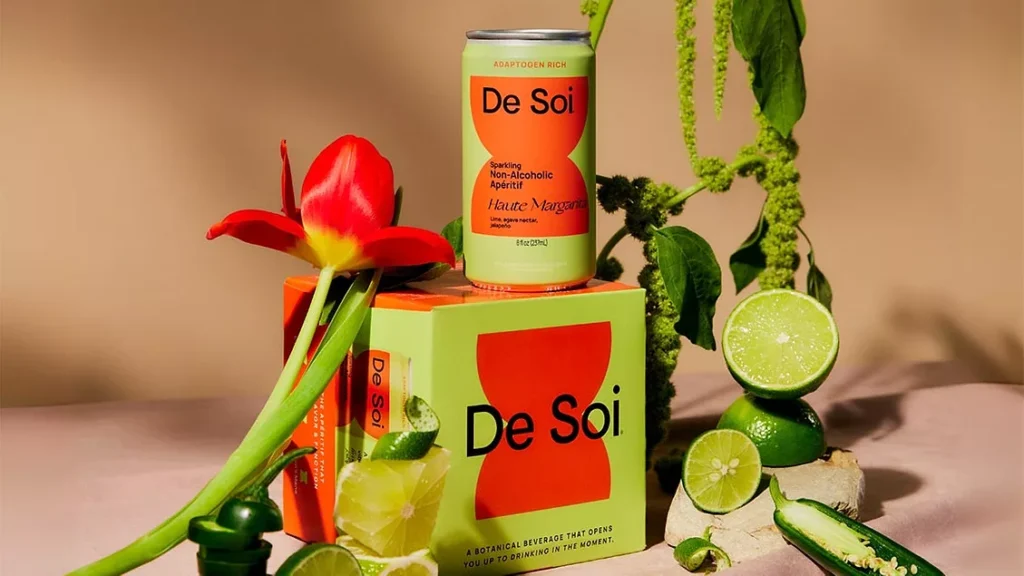Hosted by Fred Willard and Melanie Chartoff, the 1985-86 TV collection “What’s Sizzling, What’s Not,” visits 24 U.S. cities taking a look at style, meals, actions, new merchandise, innovations and fads, searching for insights on the way in which gown, speak and having enjoyable will affect tomorrow.
Within the beverage area, with present tendencies impacting the beverage alcohol market, reasonable consumption and low- and no-alcohol appear to be key influences on what to anticipate sooner or later.
As an illustration, in a latest Perception titled “5 Key Tendencies Shifting the Beverage Alcohol Market in 2025,” IWSR, London, recognized 5 key tendencies shaping the alternatives for beverage alcohol that features new moderation methods.
Throughout the ten key markets coated by IWSR’s No/Low-Alcohol Strategic Examine, no/low volumes are forecasted to increase at a compound annual development price (CAGR) of 4% between 2024 and 2028, with no-alcohol spearheading this with a rise of seven% quantity CAGR. The no-alcohol class alone is anticipated to ship incremental development of greater than $4 billion by 2028.
Additional, moderation methods applied by customers embody lighter consumption and short-term abstinence, in accordance with the Perception.
For lighter consumption, IWSR notes that there was a major enhance within the proportion of “mild” drinkers — these with low consumption frequency and/or depth. “This group is now the most important phase throughout the 15 key markets coated by IWSR’s Bevtrac shopper analysis, surpassing ‘medium’ and ‘heavy’ drinkers,” in accordance with the Perception.
Moreover, customers more and more are opting to restrict themselves to a single kind of beverage on any given event, typically lowering the quantity they drink. Throughout the 15 Bevtrac markets, the common variety of beverage classes consumed in every event was 1.8 in 2024 — in contrast with 2.4 in 2023, IWSR states.
“Drinkers are actually extra ordinary of their management of alcohol consumption,” stated Susie Goldspink, senior insights supervisor for RTDs and no/low alcohol, within the Perception. “This development spans all age teams, areas and demographics, highlighting moderation as a mainstream cultural phenomenon, fairly than a development restricted to youthful LDA+ customers. Because the moderation development goes mainstream, no- and low-alcohol classes are increasing quickly, reshaping beverage alcohol consumption patterns.”
Equally, in Chicago-based Mintel’s “The Way forward for Alcohol: Methods to Assist Manufacturers Diversify to Shifts in Consumption,” Richard Cope, senior tendencies marketing consultant, highlights how beverage alcohol is going out of style with younger customers, noting that Gen Zers are recognizing how they compromise sleep, trigger mortality, and overburden well being providers.
“These alcohol moderation tendencies are reshaping the way in which we view ingesting, because the rise of low/no alcohol positive factors momentum,” Cope states.
Nonetheless, alcohol has a protracted social and cultural historical past in delivering indulgence, de-stressing and enhancing conviviality — wants that aren’t going to vanish, he notes.
To remain related, Cope stresses that manufacturers should adapt to those shifting alcohol business tendencies.
“This implies manufacturers might want to reformulate their merchandise to match the continued repositioning and the broader perspective of what the way forward for alcohol seems to be like,” he states. “Alcoholic drinks manufacturers might must develop into broader drinks manufacturers as an alternative.”
Mintel’s perception additionally highlights how a shift in consumption tendencies is changing into troublesome to disregard, noting that in the US within the 20 years to 2023, the variety of customers older than 55 who used alcohol grew a formidable 10 factors to 59%, but general consumption fell by 10 factors, signaling a rising shopper development in alcohol moderation.
Additional, the perception notes how celebrity-backed, non-alcohol manufacturers are striving to repeat and replicate alcohol’s conventional aspirational imagery and positioning. And, in the US, 46% of customers buy tea as an alternative to alcohol, in contrast with 14% for non-alcohol beer.
In the meantime, U.S. manufacturers are embracing adaptogens and nootropics to vow qualities comparable to rest, sociability and buzz, the Mintel perception states.
Just lately De Soi, a line of premium non-alcohol apéritifs co-founded by Katy Perry and award-winning Grasp-Distiller Morgan McLachlan, unveiled its latest launch: Haute Margarita. A tart citrus lime jubilee, kissed with floral agave, and a jalapeño end, Haute Margarita reimagines the traditional spicy Marg, no tequila required, the corporate says.
“This Marg has all of the kick, and not one of the crash,” Perry stated in an announcement. “It’s spicy, sparkly, and completely satisfying. I actually can’t consider there’s no tequila in it, it tastes like there’s. Haute Margarita is my go-to (particularly on tour) once I wish to really feel festive with out feeling fuzzy the subsequent day.”
De Soi Co-Founder and Grasp Distiller McLachlan added: “We needed to seize the boldness and brightness of a spicy Marg, however elevate it with a glowing end and the useful advantages of adaptogens. It’s crisp, refreshing, and brings simply sufficient warmth to make issues fascinating, with out the alcohol.”
Going ahead, Mintel’s perception acknowledges that beverage alcohol is unlikely to vanish solely, both as a vice or a responsibly consumed indulgence. Nonetheless, it notes that there are many examples the place established manufacturers which have efficiently tailored in industries which have been basically reshaped by altering shopper consumption tendencies and behaviors.
Within the last evaluation, Mintel means that beverage alcohol manufacturers can undertake a equally forward-thinking strategy to navigate and thrive on this evolving panorama.
